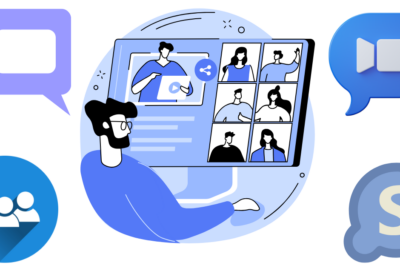Digital Twins
In today’s rapidly evolving business landscape, staying ahead of the curve is not just an aspiration; it’s a necessity. Digital Twins offer precisely that, and they are poised to be a game-changer for businesses across various sectors. In this blog, we will explore and delve into their transformative potential.
We will uncover what Digital Twins are, how they work, and, most importantly, how they can benefit your business in ways you might never have imagined. From manufacturing to healthcare, smart cities to agriculture, the applications are limitless. Join us on this journey as we unlock the many opportunities that it can offer. Let’s discover how they can reshape the future of your business.
Understanding Digital Twins
A Digital Twin is a virtual representation of a physical object, system, or process. It’s not just a static 3D model but a dynamic, real-time counterpart that mirrors the behavior and characteristics of its physical counterpart. This digital replica is often created by collecting and integrating data from sensors, IoT devices, and various sources to ensure accuracy and responsiveness.
How Do Digital Twins Work?
Data Collection and Sensors
Digital twins rely on a network of sensors to collect data from the physical object or system they represent. These sensors capture information such as temperature, pressure, motion, and more. This data is then transmitted to the digital twin, creating a dynamic and accurate reflection of the real-world counterpart.
Digital Modeling
The collected data is used to create a digital model that mirrors the physical object. This model is continuously updated in real-time, ensuring that it remains an accurate representation. Advanced modeling techniques, including 3D rendering and machine learning, are often employed to refine the digital twin.
Simulation and Analysis
Once the digital twin is created, it can be subjected to various simulations and analyses. These simulations enable businesses to predict how the physical object or system will behave under different conditions. This valuable insight allows for proactive decision-making and problem-solving.
Applications of Digital Twins Across Industries
Manufacturing and Industry
In the manufacturing sector, digital twins are a game-changer. They enable predictive maintenance, quality control, and process optimization. For example, a digital twin of a factory can predict when a machine is likely to fail, allowing for timely maintenance and minimizing downtime.
Healthcare and Patient Care
Digital twins are making waves in healthcare. By creating digital twins of patients, medical professionals can monitor their health in real-time. This technology helps with early disease detection, personalized treatment plans, and improved patient outcomes.
Smart Cities and Infrastructure
Smart cities are harnessing the power of digital twins to enhance urban planning and management. From traffic flow optimization to energy consumption monitoring, digital twins make cities more efficient and livable.
Agriculture and Precision Farming
In agriculture, digital twins help optimize crop yields and resource management. Farmers can create it of their fields and use them to make informed decisions about planting, irrigation, and harvesting.
The Benefits of Digital Twins for Your Business
Now that we’ve explored the concept and their applications, let’s dive into how they can benefit your business specifically.
1. Real-time Insights
One of the most significant advantages of Digital Twins is their ability to provide real-time insights into the performance of your assets, products, or processes. By continuously monitoring and updating the virtual model based on data from the physical counterpart, you gain an unprecedented level of visibility. This real-time feedback loop allows you to make informed decisions promptly and respond to changes as they happen.
2. Predictive Maintenance
Predictive maintenance is a game-changer for businesses with assets or equipment that require upkeep. It can analyze data from sensors and predict when maintenance or repairs are needed. By addressing issues before they become critical, you can reduce downtime, extend the lifespan of your assets, and minimize maintenance costs.
3. Efficiency and Optimization
Digital Twins help streamline operations and optimize resource allocation. Whether you’re in manufacturing, logistics, or any other industry, having a virtual model that reflects the real-world performance of your processes allows you to identify bottlenecks, inefficiencies, and opportunities for improvement. This leads to cost savings, increased productivity, and better resource management.
4. Innovation and Design
Innovation often thrives when businesses have the freedom to experiment and iterate. Digital Twins provides a safe, virtual environment for testing and refining new ideas without risking the physical assets. Whether you’re designing new products, optimizing workflows, or exploring new processes, it facilitates innovation and helps you stay ahead of the competition.
5. Risk Reduction
By simulating scenarios and potential issues, Digital Twins enable businesses to proactively manage risks. This is particularly valuable in industries where the consequences of failure can be severe. Identifying and addressing potential challenges in the virtual space before they manifest in the physical world can save you from costly setbacks and reputation damage.
6. Cost Savings
The combined effect of real-time insights, predictive maintenance, efficiency improvements, and risk reduction translates into significant cost savings. Businesses that implement Digital Twins often find themselves with reduced operational expenses, lower maintenance costs, and better resource utilization, all of which contribute to a healthier bottom line.
7. Competitive Advantage
In today’s fast-paced business environment, staying ahead of the competition is paramount. It gives you a competitive edge by allowing you to adapt, innovate, and optimize your operations more efficiently than those who rely solely on traditional methods.
Conclusion
In conclusion, digital twins are not just a futuristic concept; they are here to transform the way businesses operate. Whether you’re in manufacturing, healthcare, or any other industry, it offers a competitive edge, cost savings, and improved decision-making. Embracing this technology can pave the way for a brighter and more efficient future for your business. So, why wait? Dive into this world and watch your business thrive in the digital age.
FAQs
Are digital twins only for large corporations? No, it can benefit businesses of all sizes. While large corporations may have more extensive applications, smaller businesses can leverage this technology for cost savings and efficiency gains.
How much does it cost to implement digital twins? The cost of implementing it varies depending on the complexity of your needs. It’s essential to assess your specific requirements and budget accordingly.
Can digital twins work for non-technical industries? Absolutely. They are versatile and can be applied in various sectors, even those traditionally considered non-technical. They offer valuable insights and benefits across the board.
Are there security concerns with digital twins? Yes, security is a critical consideration when implementing this. Ensuring the protection of sensitive data and systems is paramount in their deployment.
What software is commonly used to create digital twins? Several software options include Siemens NX, 3DEXPERIENCE, and PTC’s ThingWorx. The choice depends on your industry and specific needs.



